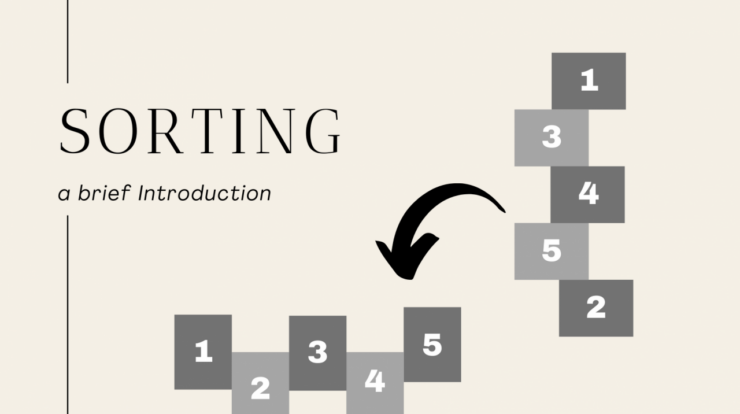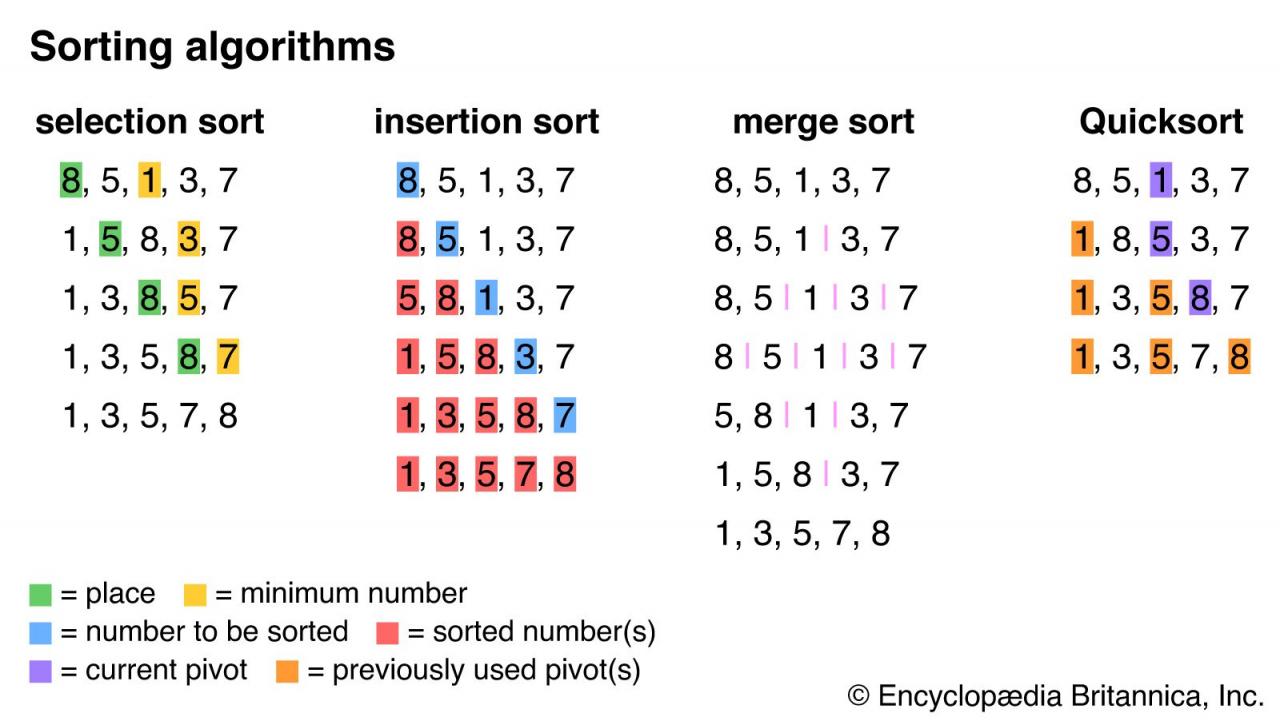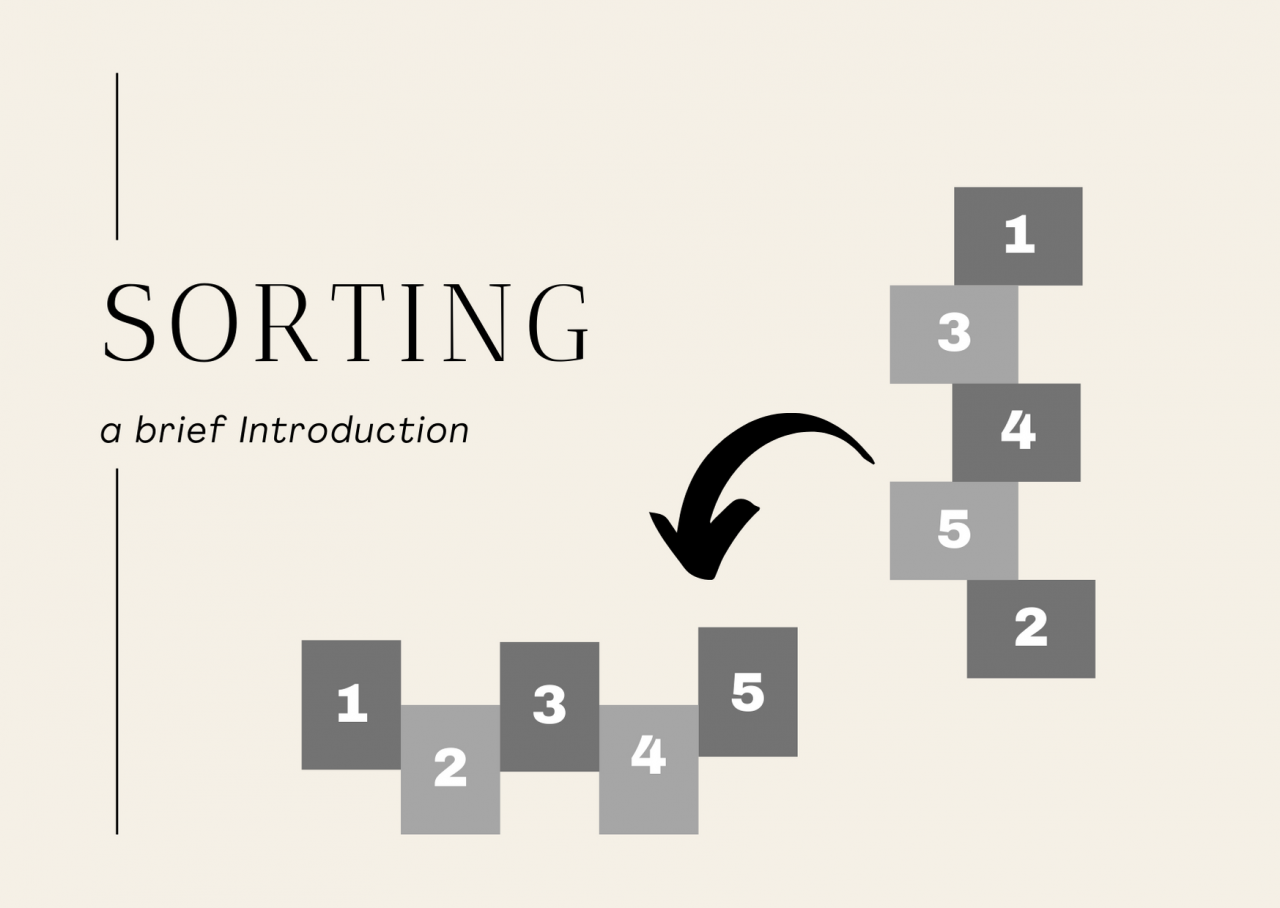
Embarking on an exploration of the enigmatic realm of sort definition, we delve into the profound world of data organization. Sorting algorithms, the unsung heroes of the digital age, emerge as the cornerstone of this intricate tapestry, empowering us to tame the chaos of unordered data and extract meaningful insights.
At its core, sorting entails the systematic arrangement of elements within a collection, guided by a specific criterion. Whether it’s ascending or descending order, alphabetical sequencing, or numerical comparison, sorting algorithms provide a structured approach to organizing data, unlocking its potential for efficient analysis and retrieval.
Definition of Sort
Sorting is a fundamental operation in computer science that involves arranging a set of elements in a specific order, typically ascending or descending. The primary purpose of sorting is to organize data in a manner that facilitates efficient searching, retrieval, and analysis.
Types of Sorting Algorithms
- Bubble Sort:A simple algorithm that repeatedly compares adjacent elements and swaps them if they are out of order.
- Insertion Sort:A technique that inserts each element into its correct position in a sorted portion of the list.
- Selection Sort:An algorithm that finds the minimum or maximum element from the unsorted portion and swaps it with the leftmost unsorted element.
- Merge Sort:A divide-and-conquer algorithm that recursively splits the list into smaller sublists, sorts them, and merges them back together.
- Quick Sort:Another divide-and-conquer algorithm that uses a pivot element to partition the list into smaller sublists and sorts them recursively.
Comparison of Sorting Algorithms

| Algorithm | Time Complexity | Space Complexity | Efficiency |
|---|---|---|---|
| Bubble Sort | O(n^2) | O(1) | Inefficient for large datasets |
| Insertion Sort | O(n^2) | O(1) | Efficient for small or partially sorted datasets |
| Selection Sort | O(n^2) | O(1) | Inefficient for large datasets |
| Merge Sort | O(n log n) | O(n) | Efficient and stable, suitable for large datasets |
| Quick Sort | O(n log n) | O(log n) | Efficient and unstable, requires more space for recursion |
Applications of Sorting
- Data Analysis:Sorting data facilitates statistical analysis, trend identification, and anomaly detection.
- Database Management:Sorting is crucial for efficient querying, indexing, and data retrieval in databases.
- Search Engine Optimization:Sorting search results by relevance, popularity, or date improves user experience and search engine rankings.
Advanced Sorting Techniques
- Radix Sort:A non-comparative sorting algorithm that sorts elements based on individual digits or bits.
- Bucket Sort:A sorting algorithm that divides the input into smaller buckets and sorts the elements within each bucket.
- Counting Sort:A sorting algorithm that works well for data with a limited range of values.
Sorting in Different Programming Languages
Python
“`pythondef bubble_sort(arr): for i in range(len(arr)
1)
for j in range(len(arr)1
i)
if arr[j] > arr[j + 1]: arr[j], arr[j + 1] = arr[j + 1], arr[j]“`
Java, Sort definition
“`javapublic static void bubbleSort(int[] arr) for (int i = 0; i < arr.length - 1; i++) for (int j = 0; j < arr.length - 1 - i; j++) if (arr[j] > arr[j + 1]) int temp = arr[j]; arr[j] = arr[j + 1]; arr[j + 1] = temp; “`
C++
“`cppvoid bubbleSort(int arr[], int n) for (int i = 0; i < n - 1; i++) for (int j = 0; j < n - 1 - i; j++) if (arr[j] > arr[j + 1]) swap(arr[j], arr[j + 1]); “`
Sorting Visualizations

Interactive visualizations of sorting algorithms are available online, such as:
- Sorting Algorithms Visualizer:https://www.cs.usfca.edu/~galles/visualization/Algorithms.html
- Sorting Algorithms Animations:https://www.toptal.com/developers/sorting-algorithms
- Visualizing Sorting Algorithms:https://www.youtube.com/watch?v=kPRA0W9-3do
Final Conclusion: Sort Definition
As we conclude our journey into sort definition, we are left with a profound appreciation for the transformative power of sorting algorithms. They not only streamline data management but also pave the way for advanced applications, from optimizing search engine results to enhancing database performance.
Embracing the principles of sorting empowers us to harness the full potential of data, unlocking its secrets and unlocking a world of possibilities.
Helpful Answers
What is the primary purpose of sorting algorithms?
Sorting algorithms are designed to organize data in a specific order, making it easier to locate, compare, and analyze.
Which sorting algorithm is considered the most efficient for large datasets?
Merge Sort and Quick Sort are generally regarded as the most efficient sorting algorithms for large datasets due to their time complexity of O(n log n).
Can sorting algorithms be applied to different data types?
Yes, sorting algorithms can be adapted to work with various data types, including numbers, strings, objects, and custom data structures.





